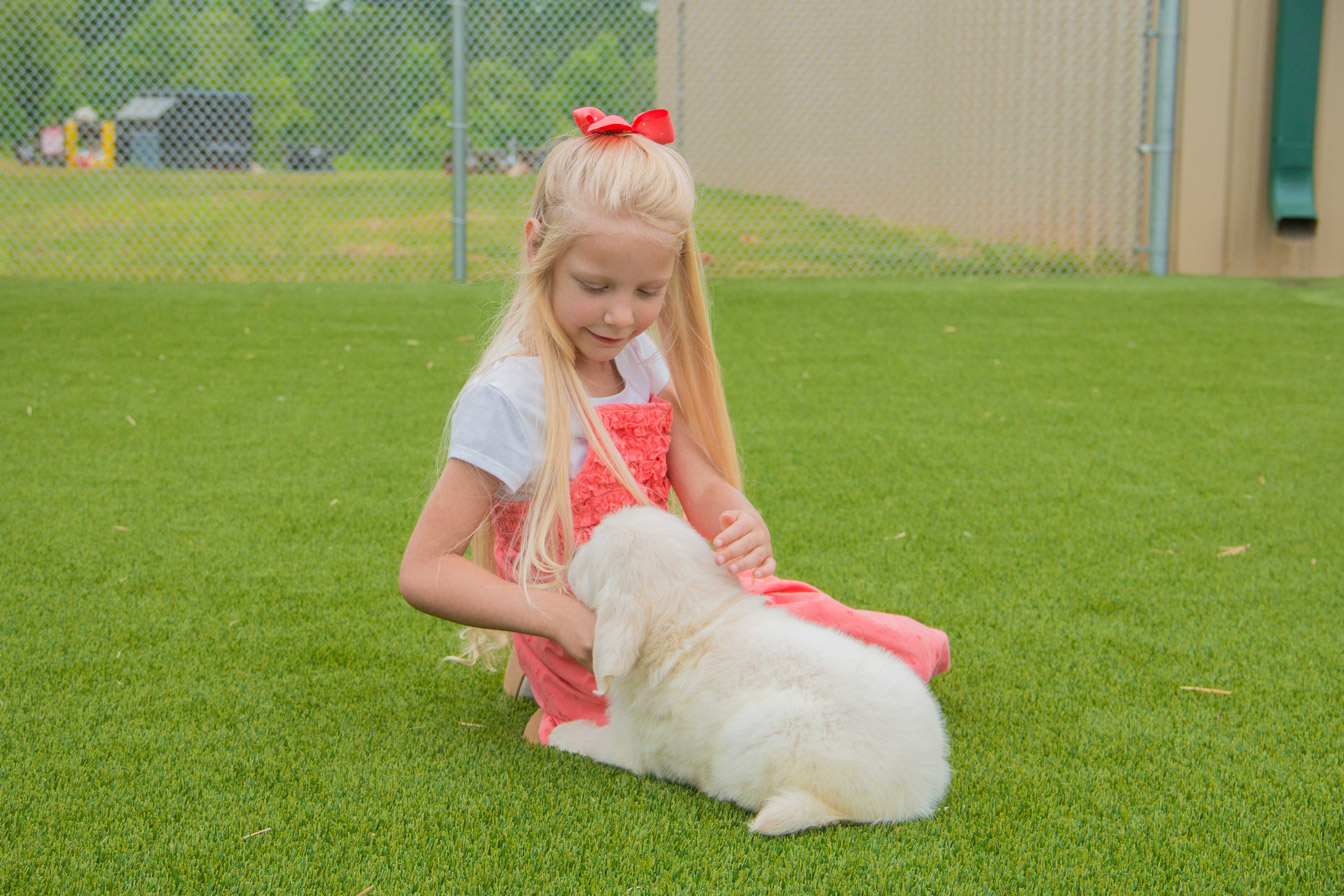Reading Your Dog’s Posture: Decoding Confidence, Fear, and Submission
Highlights

Decoding Dog Postures: Learn how high tails and erect ears indicate confidence, while low tails and flattened ears suggest fear or submission.
Behavioral Insights: Understand your dog’s mood through body language cues like ear position and tail carriage to respond effectively.
Scientific Insights: Explore the meanings behind different dog postures, tail wags, and ear positions to interpret various emotions.
Key Postures and Meanings: Identify specific dog postures—relaxed indicates comfort, aggressive means readiness, and submissive shows acknowledgment of dominance.

Dogs communicate a lot through their body language, and knowing how to read it can help strengthen the bond between you and your pet. Understanding your dog’s posture is key to knowing if they’re feeling confident, fearful, or submissive. A high tail usually signifies confidence and alertness, while a low tail or one tucked between the legs indicates fear.
Ear positions also tell a lot about a dog’s mood. Erect, forward-facing ears suggest the dog is attentive and curious, while flattened ears often signal fear or submission. Recognizing these cues can help you respond appropriately and build a trusting relationship with your canine friend.
Observing overall body movement and posture is essential. A dog that stands tall with a high head and tail position is likely feeling confident. Conversely, a dog with a lowered body and averted gaze may be signaling submission. By paying attention to these signals, you can better understand and meet your dog’s needs.
Understanding Canine Body Language
Recognizing a dog’s posture and movements can help owners interpret what their pets are communicating. Different body signals can indicate confidence, fear, or submission.
The Science of Dog Posture
Dogs use their bodies to express emotions and intentions. From the position of their ears to the way they carry their tails, each movement has significance.
When a dog’s ears are forward, it often means they are alert or interested. If their ears are pinned back, they might be scared or uncomfortable. A wagging tail doesn’t always mean happiness; the speed, height, and stiffness of the wag can indicate different emotions.
Research shows that eye contact is crucial. A hard stare might signal aggression, while a soft gaze generally indicates contentment. By observing these cues, owners can better understand their dogs’ feelings and needs.
Key Postures and What They Mean
Relaxed Posture: A relaxed dog has a loose stance, open mouth, and wagging tail. This indicates they are comfortable and happy.
Aggressive Posture: Signs include a stiff body, raised hackles, and a focused stare. The dog’s body may be leaning forward, ready to react.
Fearful Posture: Dogs showing fear might have a lowered body, tucked tail, and pinned-back ears. They may also avoid eye contact.
Submissive Posture: Submission is shown through actions like rolling over, exposing the belly, or lowering the head. This means the dog acknowledges another’s dominance.
Recognizing these postures helps foster a strong bond between dog and owner, making interactions smoother and safer. For more details, you can read this guide.
Signs of Confidence in Dogs

Confident dogs display specific body language cues that are easy to identify if you know what to look for. These signs include how they stand and carry their bodies, the position of their tails, their facial expressions, and the sounds they make.
Body Stance
A confident dog’s body stance is usually relaxed and open. They stand tall with their weight evenly distributed on all four legs. Their posture is upright, and they often have a slight bend in their legs, indicating that they are comfortable and at ease.
A confident dog’s chest may be slightly pushed out, showing pride and self-assurance. Their head is often held high, and they move with smooth, fluid motions. These dogs do not shy away from making eye contact and appear alert and attentive to their surroundings.
Tail Positioning
A confident dog’s tail tells a lot about their mood. When a dog is confident, their tail is typically held high or at a neutral level, not tucked between their legs.
The tail may wag slowly and steadily, a sign that they are content. This high or neutral tail position signals to other dogs and people that the dog is relaxed and self-assured.
Facial Expressions
Facial expressions in confident dogs are quite telling. Their eyes are often soft and relaxed, avoiding any hard stares, which could be seen as aggressive.
The ears of a confident dog are typically in a natural position, not pinned back or overly forward. The mouth of a confident dog may be slightly open as if they are smiling, with no signs of tension around the lips or jaw.
Vocalizations and Noise
Confident dogs may make certain sounds that convey their state of mind. They might bark, but not in a high-pitched or frantic manner. Instead, their barks are deep and steady, signaling confidence.
These dogs may also make contented sounds like low grumbles or soft growls during play, showing that they are comfortable and secure.
Recognizing Fear and Anxiety
Understanding a dog’s fear and anxiety involves noticing physical and behavioral changes. Recognizing these signs can help you address your dog’s needs better and ensure their well-being.
Physical Signs
Dogs show fear and anxiety through various physical cues. Ears that are flattened against the head often indicate fear. A low or tucked tail suggests the dog is scared or submissive. Dilated pupils can be a signal of stress or anxiety.
Other signs include panting, even when not hot, and trembling. Dogs might also drool more than usual when anxious. Raised hackles might appear as well, which are the hairs along their back standing up.
Lip licking and yawning can be stress-related behaviors. These signs should be taken seriously as they often point to underlying anxiety in dogs.
Behavioral Indicators
Behavioral changes can reveal a lot about a dog’s emotional state. Avoidance behaviors, such as trying to hide, cowering, or seeking to escape, are common in anxious dogs. Excessive barking or growling can also be a response to fear.
Dogs may become unusually clingy, staying very close to their owner. They might also show signs of hypervigilance, being overly alert to surroundings. Some dogs may exhibit destructive behavior, such as chewing on furniture, as a way to cope with their anxiety.
Loss of appetite is another common behavioral indicator of anxiety. If a dog suddenly refuses to eat, it could be due to stress. House soiling in a previously house-trained dog can also be a response to anxiety.
Recognizing these signs early can lead to better anxiety management and a healthier, happier dog.
Submission Signals

Understanding submission signals in dogs is essential for interpreting their behavior accurately. Recognizing these signals helps in ensuring your dog feels safe and secure.
Submissive Postures
Submissive postures in dogs include lowered body stance, tail tucking, and avoiding eye contact. These postures are clear indicators of submission or fear.
- Lowered Body Stance: A dog with a lowered body may be showing submission or fear. This position makes the dog appear smaller and less threatening.
- Tail Tucking: When a dog’s tail is tucked between its legs, it signifies submission or anxiety. This behavior is a natural response to feeling threatened or uncomfortable.
- Avoiding Eye Contact: Dogs that turn their head away and avoid looking directly are typically trying to show they mean no harm. This is a way to diffuse potential conflict.

Submissive postures are crucial for maintaining harmony in the canine world, and recognizing them can help in addressing your dog’s emotional state.
Calming Signals
Calming signals are subtle behaviors that dogs use to communicate with each other and with humans. These signals help to prevent conflicts and soothe tense situations.
- Yawning: Dogs often yawn to calm themselves when they are stressed or uneasy. It’s a way to signal that they are not a threat.
- Licking Lips: Rapid lip licking is another common calming signal. This behavior indicates that the dog is feeling nervous or anxious and is trying to calm itself.
- Turning Away: By turning their head or body away, dogs signal that they are not interested in conflict. This behavior helps to de-escalate tensions.
Understanding these calming signals is vital for creating a trusting relationship with your dog and ensuring a peaceful environment.
Interpreting Dog-to-Dog Interactions
Understanding dog-to-dog interactions helps identify play behaviors and distinguish between aggressive and submissive encounters. This knowledge can prevent conflicts and encourage healthy socialization.
Play Behaviors
Dogs use specific body language to invite and engage in play. A common signal is the play bow, where the dog stretches its front legs forward, lowers its chest, and keeps its rear up. This posture is often accompanied by playful barks and wagging tails.
During play, dogs exhibit loose, exaggerated movements. Their bodies will appear relaxed, and their mouths may be open, resembling a smile. Rolling over to expose the belly is another behavior that signifies trust and playfulness, not submission in the context of play.
It’s important to observe mutual engagement. Both dogs should seem eager and willing to continue. Switching roles, where each dog takes turns being the chaser or the chased, is also a sign of healthy, balanced play.
Aggressive vs Submissive Encounters
Aggressive encounters can be identified by specific signs. A dog displaying aggression may have a stiff posture, hard stares, and raised hackles. Barking or growling with a low tone and showing teeth are also indicators of potential aggression.
Conversely, submissive dogs show different body cues. They may lower their bodies, tuck their tails, and avoid direct eye contact. A whale eye, where the whites of the eyes are visible, can indicate fear or discomfort. Submissive dogs might also lay on their backs, exposing their bellies to show deference.
Recognizing these behaviors can help owners intervene early to prevent fights. Certified animal behaviorists can provide additional guidance on managing aggression and fostering positive interactions.
For more detailed information, visit this guide to reading dog body language.
Frequently Asked Questions
Understanding your dog’s body language helps build trust and mutual respect. Recognizing the nuances in posture can provide insight into their emotions and intentions.
Dogs use their whole body to communicate. A high tail may show confidence or excitement. A low, wagging tail might indicate relaxation. Paying attention to the entire body, including ears and eyes, provides the best clues.
Common signs of fear include a tucked tail, flattened ears, and avoiding eye contact. They may also cower, shake, or try to make themselves smaller. Recognizing these signs can help you comfort and support your pet.
Submission is shown through low body posture, avoiding direct eye contact, and rolling over to expose the belly. A dog may also wrinkle its nose or lick its lips to show submission.
A dog’s emotional state can be read through various cues like tail position, ear orientation, and facial expressions. Relaxed ears and a soft, wagging tail usually signal a happy and calm dog. Enlarged pupils and tense muscles may indicate distress.
Dogs communicate with humans using tail wags, body position, facial expressions, and vocalizations. They might nudge, lean, or bring toys to seek attention or indicate they want to play.
A confident dog typically stands tall with its head held high, ears erect, and eyes bright. Their tail might be up and wagging slowly. They move with purpose and often approach new situations with curiosity.

